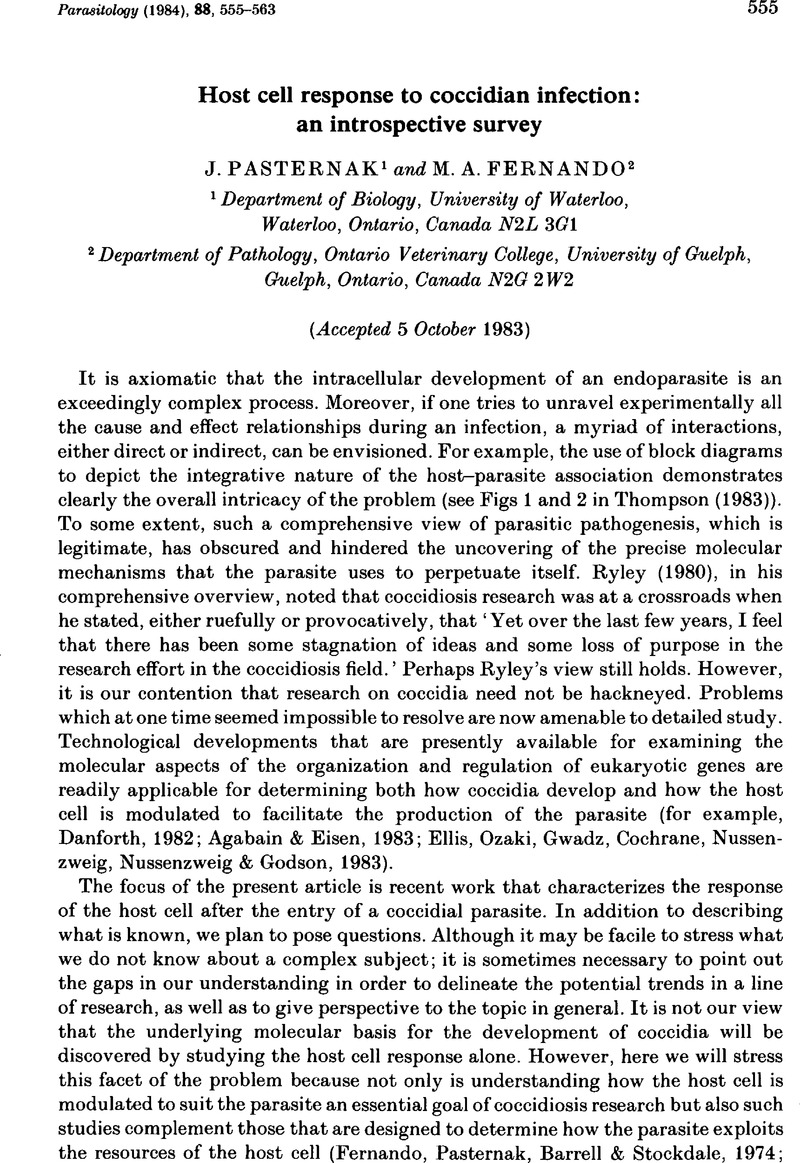Crossref Citations
This article has been cited by the following publications. This list is generated based on data provided by Crossref.
Pittilo, R. M.
Ball, S. J.
Norton, C. C.
and
Gregory, M. W.
1986.
Penetration of chicken peripheral blood lymphocytes by Eimeria acervulina sporozoites.
Annals of Tropical Medicine & Parasitology,
Vol. 80,
Issue. 5,
p.
569.
McKENZIE, M.E.
and
LONG, P.L.
1986.
Immunization of Chickens Against Coccidiosis with Extracts of Eimeria-Infected Tissues.
Poultry Science,
Vol. 65,
Issue. 5,
p.
892.
Canning, Elizabeth U.
1986.
Terminology, Taxonomy and Life Cycles of Apicomplexa.
International Journal of Tropical Insect Science,
Vol. 7,
Issue. 3,
p.
319.
Fiori, Mario G.
and
Lowndes, Herbert E.
1988.
Histochemical study ofSarcocystis sp. intramuscular cysts in gastrocnemius and soleus of the cat.
Parasitology Research,
Vol. 75,
Issue. 2,
p.
123.
Ball, S.J.
Pittilo, R.M.
and
Long, P.L.
1989.
Advances in Parasitology Volume 28.
Vol. 28,
Issue. ,
p.
1.
Koudela, B.
Vítovec, J.
and
Štěrba, J.
1990.
Concurrent infection of enterocytes with Eimeria scabra and other enteropathogens in swine.
Veterinary Parasitology,
Vol. 35,
Issue. 1-2,
p.
71.



